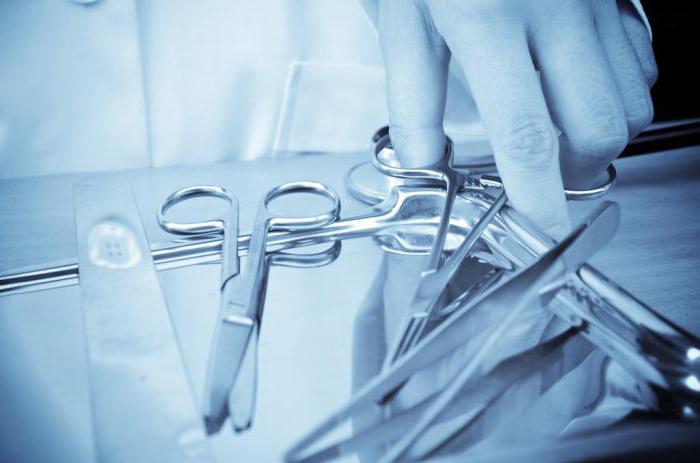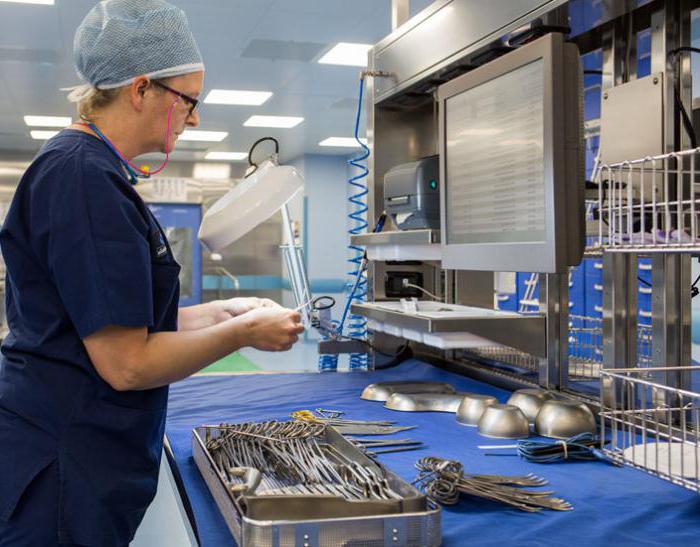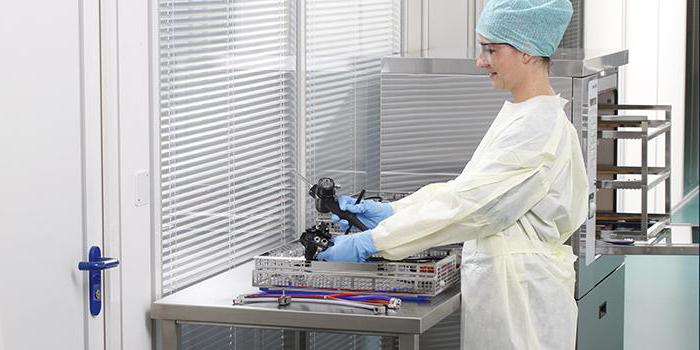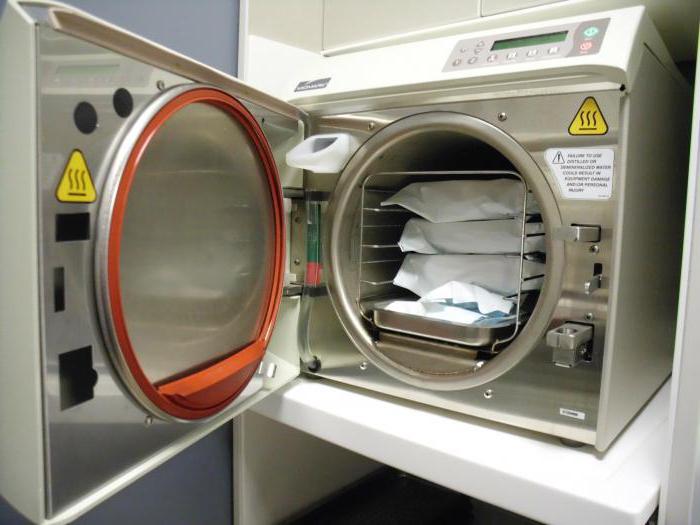Saving human lives is a very responsible task entrusted to medical professionals. And in order to cope with it qualitatively, it is important to use sterilized, clean medical instruments. In the article, we will consider in detail the air sterilization method and its features, positive and negative sides.
What is sterilization of medical supplies?

Sterilization is the purification of medical equipment, the removal of microbes, their spores, viruses from its surface by chemical and physical effects. A medical device is sterile when its probable biological load is less than or equal to 10 to -6 degrees. Everything, including the air sterilization method, is used for metal, glass products (we will consider in more detail below), which come into contact with human blood, the surface of wounds, touch the mucous membranes and can violate their integrity.
The main stages of sterilization
The entire sterilization process consists of three stages:
- Disinfection of medical supplies.
- A thorough pre-sterilization cleaning.
- Directly sterilization.
It is important to remember that sterilization of medical devices (air method) will be carried out qualitatively only if all three stages are performed sequentially. Otherwise, microorganisms may remain on the instruments, which, in contact with wounds or the mucous membrane, will lead to infection. Steam, air sterilization methods are very similar to each other, but they have significant differences in operating modes. Let's consider in more detail.
Basic requirements for sterilization of medical instruments
Sterilization is a complex process, therefore, for its high-quality carrying out, it is necessary to observe some requirements:
- Effective cleansing.
- Necessary packaging materials.
- Packaging of medical instruments must be in compliance with all the rules.
- It is necessary to load the sterilizer with medical products according to a certain technology.
- Medical instruments that undergo sterilization must be of excellent quality and in strictly observed quantities.
- After sterilization, the material must be stored properly, handle it skillfully and follow the rules of transportation.
The whole process of sterilization of instruments is carried out from the moment when the operation was completed, until the moment when the instrument is folded into storage (or until the next use). Properly performed disinfection will ensure sterility and extend the life of tools.

Everything, including the air sterilization method, is carried out according to the following algorithm:
- Carry out a mechanical cleaning of the used tool.
- Check for damage on the surface.
- Then wash the items.
- Then the tools are dried.
- Then they need to be folded into a sterilization package.
- Sterilization is carried out directly.
- After this, the products are stored in a sterile place or used as soon as necessary. With proper packaging, medical tools can be stored from day to six months.
Air sterilization method
The air sterilization method is used to process medical devices, parts of devices that are made of corrosion-resistant metals, glass products marked 200 ° C, as well as rubber medical devices.
Before sterilization must be carried out pre-sterilization cleaning and thoroughly dry the instruments at a temperature of 85 ° C. For drying use a special drying cabinet. The entire sterilization process takes about 2.5 hours (150 minutes) in time.
Pre-sterilization treatment of medical devices
The air sterilization method can only be used after thoroughly preparing the instruments for this process.
So, pre-sterilization treatment is an action by which protein, fat and drug contaminants are removed from the surface of medical instruments. This process helps to make sterilization more effective and reduce the risk of pyrogenic reactions.
To properly prepare instruments for sterilization:
- A washing and disinfecting solution is prepared and the used medical supplies are soaked in it.
- Using cotton-gauze swabs or brushes, thoroughly wash the instruments in the same solution. Particular attention should be paid to the joints (locks, channel gaps), since it is in them that harmful microorganisms accumulate. After use, brushes should be washed and left in a dry place, and cotton swabs should be discarded.
- Rinse the clean tool in running water to remove traces and smell of the cleaning solution.
- After that, each medical instrument is separately rinsed in distilled water for 30 seconds.
- After rinsing, the product is thoroughly dried. It can be left to dry in the open air, or you can use a dry heat oven at a temperature of 85 degrees.
- After carrying out all the stages, the quality control of the pre-sterilization treatment is carried out by staging samples.

When the treatment is finished, you can proceed directly to sterilize the instruments with dry hot air.
Air Method Modes
The air sterilization method has a variety of modes. Each of them differs in temperature and sterilization time. It is the variety of operating modes that makes the air sterilization method (dry hot air) so popular. The table is located below.
| Temperature | Time | Process control | ||
| Value | Tolerance | Value | Tolerance | |
| 160 | +/- 3 | 150 | +/- 5 | Chloramphenicol |
| 180 | +/- 3 | 60 | +/- 5 | Tartaric acid, thiourea |
| 200 | +/- 3 | 30 | +/- 3 | Mercury thermometer |
The main mode of sterilization by air is a temperature of 180 ° C and an hour of time. This mode is the most reliable and optimal.

Air Sterilization Conditions
For medical instruments to be properly sanitized with dry, hot air, certain conditions must be met:
- Only fully dried items can be sterilized.
- You can sterilize products that are packaged in sack-free paper, moisture-resistant paper, or no packaging at all. Depending on the choice of packaging (or its absence), the storage time of sterilized instruments will be determined.
- Sterilization of cotton material is prohibited.
Maximum shelf life of sterile instruments
If the instruments were sterilized in a package (in paper), then their sterility will remain for three days. As for products that were treated with dry hot air without packaging, they must be used immediately after the end of the sterilization process.
Operating procedure on the sterilizer with air
For sterilization with hot dry air, an air sterilizer is used. There are several rules that must be followed in order to avoid poor-quality processing of tools.
Firstly, you cannot load all items into the sterilizer in bulk, they must all be neatly laid out.
Secondly, large tools that take up a lot of space should be placed on the top shelf. Thus, the flow of hot air will be evenly distributed.
Thirdly, complex products, such as scissors or clamps, need to be folded open in the sterilizer so that the air treatment is better. Syringes must be placed unassembled, and medical dishes cannot be stacked one into the other. That is, you can not put a glass in a glass. Each tool should be separately laid out.

Air Sterilizer Operation Algorithm
- The sterilizer does not need to be preheated, all the instruments are folded inside the cold equipment.
- After that it is turned on and it heats up.
- When the sterilizer is heated to the desired temperature (180 degrees), the countdown of the sterilization time (one hour) begins.
- After time, the equipment is turned off and wait until it cools down to 40-50 degrees.
- Then take out the processed medical instruments.
Advantages of the air sterilization method
The air sterilization method has an undeniable advantage over the steam method: low cost of the necessary equipment.
In addition, there are other positive qualities:
- This method has low corrosion properties.
- It penetrates deep into the material and provides high-quality processing.
- It does not need aeration.
- It does not harm the environment.

Disadvantages of Dry Hot Air Sterilization
Despite a number of advantages, the air sterilization method also has negative aspects.
The disadvantages of this method are:
- High energy intensity of the method.
- Cycle too long. Sterilization requires a minimum of half an hour and an additional time (about an hour) for heating and cooling equipment.
- In this way, it is impossible to sterilize fabric and plastic products.
- Many metal tools do not tolerate processing at such high temperatures very well: they lose their properties and quickly become dull.
Conclusion
In the article we studied in detail the most famous and widely used method of sterilization of medical instruments - dry hot air treatment (air method), its features, positive and negative sides. This is the method used by most modern hospitals.

In conclusion, I want to say that no matter what sterilization method was chosen, the main thing is that the cleaning and disinfection of products should be carried out efficiently and in compliance with all rules.
